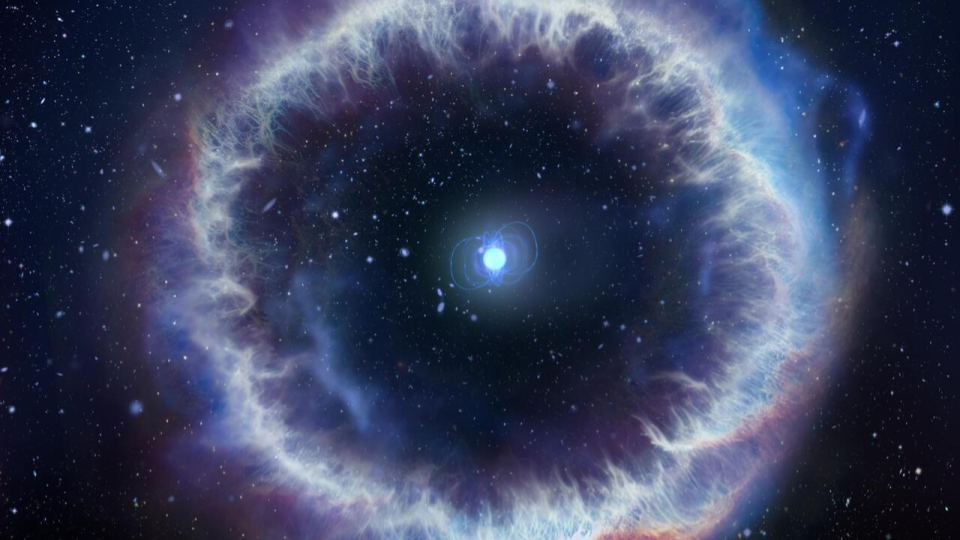
In 2007, a student discovered a really weird thing in archival radio data. David Narkevic was working for Duncan Lorimer and found a 5-millisecond burst of energy in the Radio that appeared to be of extragalactic origin. In the years since then, over 100 of these objects have been discovered, with a few of them repeating on a regular basis. No one had predicted something like this should exist, and figuring out what exactly we’re seeing has been a wild ride. And the ride has not yet reached the end.
Based on what we’ve seen so far, the radio bursts are caused by high energy, highly-localized, short lived events. Because light takes time to travel, we know that millisecond duration pulses must come from sources less than 1000 km in size, and objects like neutron stars or maybe stellar mass black holes would fit the data, and theories of their origins include magnetars – highly magnetized neutron stars – or some kind of snacking blackhole or neutron star that is taking large bites from a companion.
These kinds of origins could leave telltale evidence in the form of faint and persistent radio emission. These have now been seen three times, and it is starting to be possible to build a model that includes both a high density object and a surrounding nebula that emits a persistent, fainter, radio signal. This is super cool for a couple different reasons. On one hand, this means that when we see a fraction of a second long burst of radio we can pinpoint its origins by looking for its home nebula… at least when the source is close enough for those to be seen. It also means we have a more complete model of what’s going on that includes a high density source surrounded by a nebula that may be surrounded by the remnant of a supernova.
This work appears in Nature and is led by Gabriele Bruni.
Our ability to fully understand these objects is limited by our ability to find them nearby…. But not too nearby. It’s worth noting the kind of energy released by these objects can destroy nearby solar systems. There is nothing near us – that we know of – capable of becoming a fast radio burst, and I think it’s fair to say we’re ok with the challenge of looking at things far far away.
One of the challenges of observing fast radio bursts is catching them in the act. While we have telescopes that work hard to spot things that go flash or flare in optical, X-ray, and gamma ray light, that same kind of large scale monitoring just isn’t as easy in radio wavelengths.
